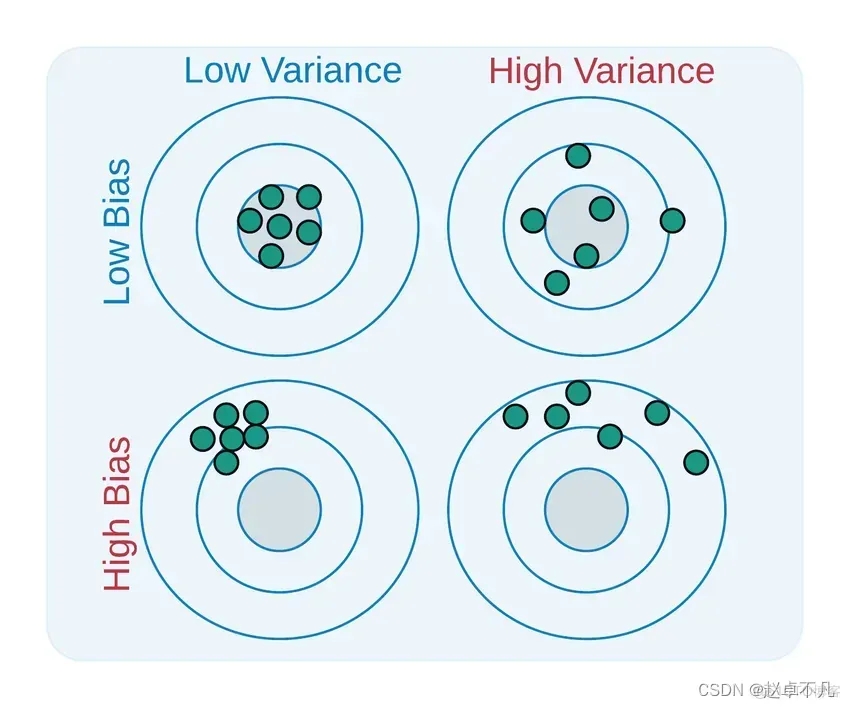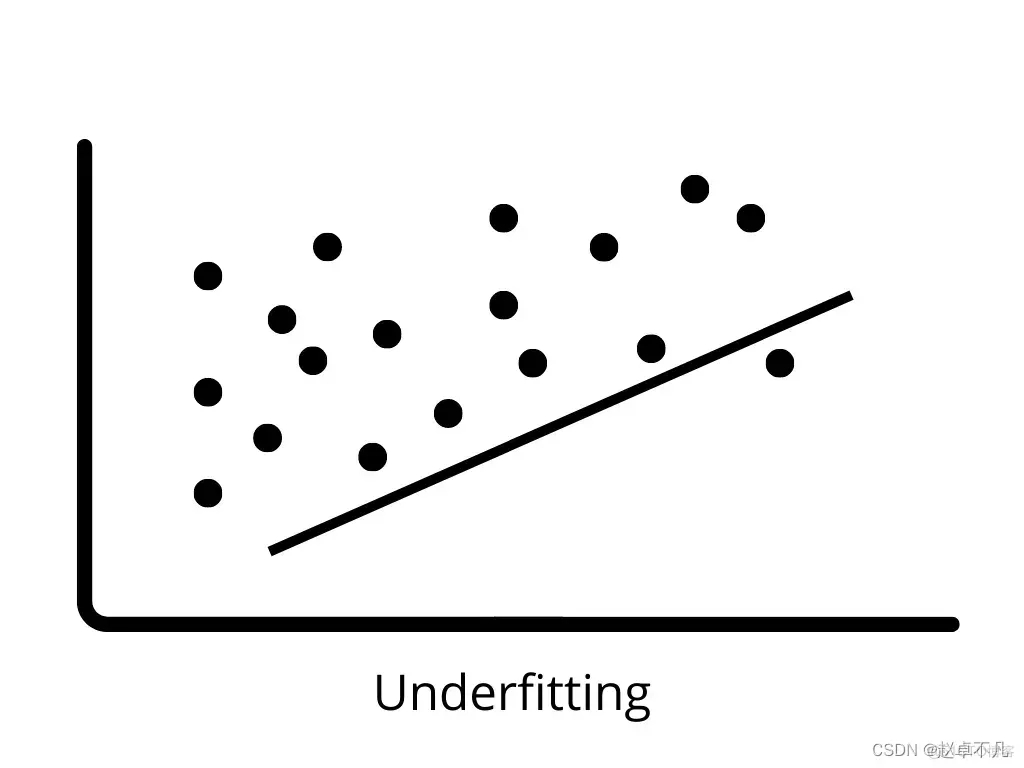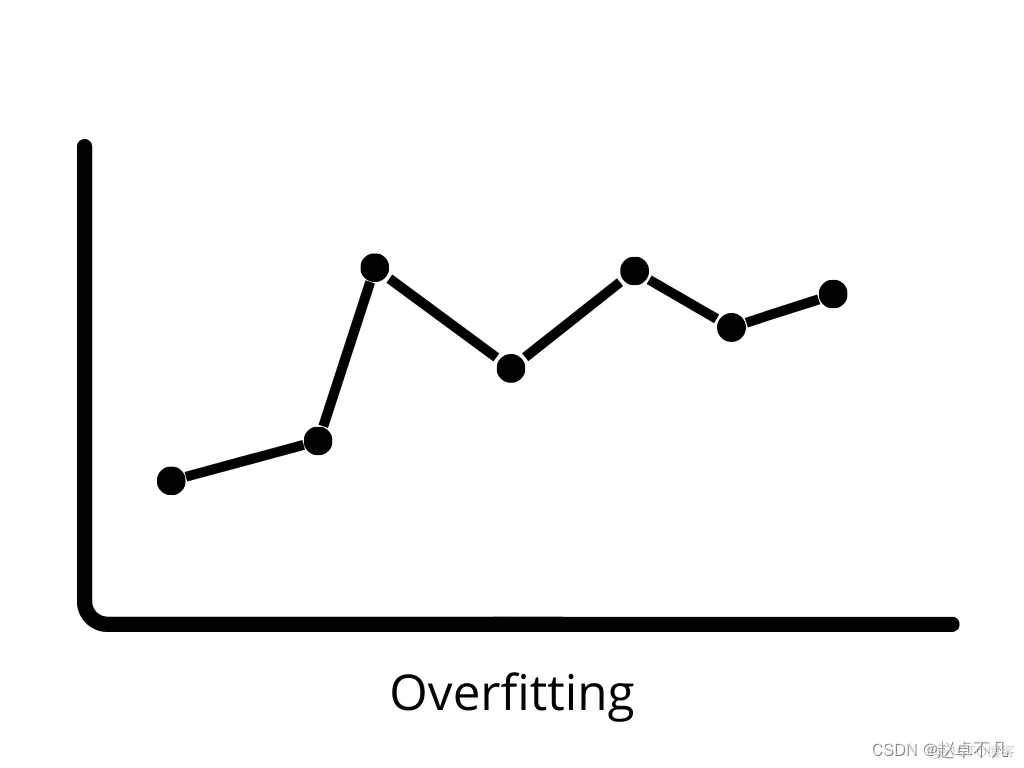What is regularization in machine learning?
1. Introduction
In the field of machine learning, relevant models may become overfitting and underfitting during the training process. To prevent this from happening, we use regularization operations in machine learning to properly fit the model on our test set. Generally speaking, regularization operations help everyone obtain the best model by reducing the possibility of overfitting and underfitting.
In this article, we will understand what is regularization, types of regularization. Additionally, we will discuss related concepts such as bias, variance, underfitting, and overfitting.
Let’s stop talking nonsense and get started!
2. Bias and Variance
Bias and Variance are used to describe the model we learned and the real model The two aspects of the gap
need to be rewritten: the definitions of the two are as follows:
- Bias is to use all The difference between the average of the outputs of all models trained on the possible training data set and the output value of the true model.
- Variance is the difference between the output values of the models trained on different training data sets.

Bias reduces the sensitivity of the model to individual data points while increasing the generalization of the data , reducing the sensitivity of the model to isolated data points. Training time can also be reduced since the required functionality is less complex. High bias indicates that the target function is assumed to be more reliable, but sometimes results in underfitting the model
Variance (Variance) in machine learning refers to the sensitivity of the model to small changes in the data set. mistake. Since there is significant variation in the data set, the algorithm models noise and outliers in the training set. This situation is often called overfitting. When evaluated on a new data set, since the model essentially learns every data point, it cannot provide accurate predictions
A relatively balanced model will have low bias and low variance, while high bias and high variance will lead to underfitting and overfitting.
3. Underfitting
Underfitting occurs when the model cannot correctly learn the patterns in the training data and generalize to new data. . Underfitting models perform poorly on training data and can lead to incorrect predictions. When high bias and low variance occur, underfitting is prone to occur


##5. Regularization concept
The term "regular "" describes methods for calibrating machine learning models to reduce the adjusted loss function and avoid overfitting or underfitting.

By using regularization techniques, we can make machine learning models more accurate Fit to a specific test set effectively, thereby effectively reducing the error in the test set
6. L1 regularization
Compared with collar regression, the implementation of L1 regularization is mainly to add a penalty term to the loss function. The penalty value of this term is the sum of the absolute values of all coefficients, as follows:

In the Lasso regression model, the penalty is increased by increasing the absolute value of the regression coefficient in a manner similar to ridge regression item to achieve. In addition, L1 regularization has good performance in improving the accuracy of linear regression models. At the same time, since L1 regularization penalizes all parameters equally, it can make some weights become zero, thus producing a sparse model that can remove certain features (a weight of 0 is equivalent to removal).
7. L2 regularization
L2 regularization is also achieved by adding a penalty term to the loss function. Realize that the penalty term is equal to the sum of the squares of all coefficients. As follows:

Generally speaking, it is considered a method to adopt when the data exhibits multicollinearity (independent variables are highly correlated). Although least squares estimates (OLS) in multicollinearity are unbiased, their large variances can cause observed values to differ significantly from actual values. L2 reduces the error of regression estimates to a certain extent. It usually uses shrinkage parameters to solve multicollinearity problems. L2 regularization reduces the fixed proportion of weights and smoothes the weights.
8. Summary
After the above analysis, the relevant regularization knowledge in this article is summarized as follows:
L1 regularization can generate a sparse weight matrix, that is, a sparse model, which can be used for feature selection;
L2 regularization can prevent model overfitting. To a certain extent, L1 can also prevent overfitting and improve the generalization ability of the model;
L1 (Lagrangian) regularization assumes that the prior distribution of parameters is the Laplace distribution, which can ensure the sparsity of the model. That is, some parameters are equal to 0;
The assumption of L2 (ridge regression) is that the prior distribution of the parameters is a Gaussian distribution, which can ensure the stability of the model, that is, the values of the parameters will not be too large or too small.
In practical applications, if the features are high-dimensional and sparse, L1 regularization should be used; if the features are low-dimensional and dense, L2 regularization should be used
The above is the detailed content of What is regularization in machine learning?. For more information, please follow other related articles on the PHP Chinese website!

Hot AI Tools

Undresser.AI Undress
AI-powered app for creating realistic nude photos

AI Clothes Remover
Online AI tool for removing clothes from photos.

Undress AI Tool
Undress images for free

Clothoff.io
AI clothes remover

Video Face Swap
Swap faces in any video effortlessly with our completely free AI face swap tool!

Hot Article

Hot Tools

Notepad++7.3.1
Easy-to-use and free code editor

SublimeText3 Chinese version
Chinese version, very easy to use

Zend Studio 13.0.1
Powerful PHP integrated development environment

Dreamweaver CS6
Visual web development tools

SublimeText3 Mac version
God-level code editing software (SublimeText3)

Hot Topics
 15 recommended open source free image annotation tools
Mar 28, 2024 pm 01:21 PM
15 recommended open source free image annotation tools
Mar 28, 2024 pm 01:21 PM
Image annotation is the process of associating labels or descriptive information with images to give deeper meaning and explanation to the image content. This process is critical to machine learning, which helps train vision models to more accurately identify individual elements in images. By adding annotations to images, the computer can understand the semantics and context behind the images, thereby improving the ability to understand and analyze the image content. Image annotation has a wide range of applications, covering many fields, such as computer vision, natural language processing, and graph vision models. It has a wide range of applications, such as assisting vehicles in identifying obstacles on the road, and helping in the detection and diagnosis of diseases through medical image recognition. . This article mainly recommends some better open source and free image annotation tools. 1.Makesens
 This article will take you to understand SHAP: model explanation for machine learning
Jun 01, 2024 am 10:58 AM
This article will take you to understand SHAP: model explanation for machine learning
Jun 01, 2024 am 10:58 AM
In the fields of machine learning and data science, model interpretability has always been a focus of researchers and practitioners. With the widespread application of complex models such as deep learning and ensemble methods, understanding the model's decision-making process has become particularly important. Explainable AI|XAI helps build trust and confidence in machine learning models by increasing the transparency of the model. Improving model transparency can be achieved through methods such as the widespread use of multiple complex models, as well as the decision-making processes used to explain the models. These methods include feature importance analysis, model prediction interval estimation, local interpretability algorithms, etc. Feature importance analysis can explain the decision-making process of a model by evaluating the degree of influence of the model on the input features. Model prediction interval estimate
 Identify overfitting and underfitting through learning curves
Apr 29, 2024 pm 06:50 PM
Identify overfitting and underfitting through learning curves
Apr 29, 2024 pm 06:50 PM
This article will introduce how to effectively identify overfitting and underfitting in machine learning models through learning curves. Underfitting and overfitting 1. Overfitting If a model is overtrained on the data so that it learns noise from it, then the model is said to be overfitting. An overfitted model learns every example so perfectly that it will misclassify an unseen/new example. For an overfitted model, we will get a perfect/near-perfect training set score and a terrible validation set/test score. Slightly modified: "Cause of overfitting: Use a complex model to solve a simple problem and extract noise from the data. Because a small data set as a training set may not represent the correct representation of all data." 2. Underfitting Heru
 Transparent! An in-depth analysis of the principles of major machine learning models!
Apr 12, 2024 pm 05:55 PM
Transparent! An in-depth analysis of the principles of major machine learning models!
Apr 12, 2024 pm 05:55 PM
In layman’s terms, a machine learning model is a mathematical function that maps input data to a predicted output. More specifically, a machine learning model is a mathematical function that adjusts model parameters by learning from training data to minimize the error between the predicted output and the true label. There are many models in machine learning, such as logistic regression models, decision tree models, support vector machine models, etc. Each model has its applicable data types and problem types. At the same time, there are many commonalities between different models, or there is a hidden path for model evolution. Taking the connectionist perceptron as an example, by increasing the number of hidden layers of the perceptron, we can transform it into a deep neural network. If a kernel function is added to the perceptron, it can be converted into an SVM. this one
 The evolution of artificial intelligence in space exploration and human settlement engineering
Apr 29, 2024 pm 03:25 PM
The evolution of artificial intelligence in space exploration and human settlement engineering
Apr 29, 2024 pm 03:25 PM
In the 1950s, artificial intelligence (AI) was born. That's when researchers discovered that machines could perform human-like tasks, such as thinking. Later, in the 1960s, the U.S. Department of Defense funded artificial intelligence and established laboratories for further development. Researchers are finding applications for artificial intelligence in many areas, such as space exploration and survival in extreme environments. Space exploration is the study of the universe, which covers the entire universe beyond the earth. Space is classified as an extreme environment because its conditions are different from those on Earth. To survive in space, many factors must be considered and precautions must be taken. Scientists and researchers believe that exploring space and understanding the current state of everything can help understand how the universe works and prepare for potential environmental crises
 Implementing Machine Learning Algorithms in C++: Common Challenges and Solutions
Jun 03, 2024 pm 01:25 PM
Implementing Machine Learning Algorithms in C++: Common Challenges and Solutions
Jun 03, 2024 pm 01:25 PM
Common challenges faced by machine learning algorithms in C++ include memory management, multi-threading, performance optimization, and maintainability. Solutions include using smart pointers, modern threading libraries, SIMD instructions and third-party libraries, as well as following coding style guidelines and using automation tools. Practical cases show how to use the Eigen library to implement linear regression algorithms, effectively manage memory and use high-performance matrix operations.
 Five schools of machine learning you don't know about
Jun 05, 2024 pm 08:51 PM
Five schools of machine learning you don't know about
Jun 05, 2024 pm 08:51 PM
Machine learning is an important branch of artificial intelligence that gives computers the ability to learn from data and improve their capabilities without being explicitly programmed. Machine learning has a wide range of applications in various fields, from image recognition and natural language processing to recommendation systems and fraud detection, and it is changing the way we live. There are many different methods and theories in the field of machine learning, among which the five most influential methods are called the "Five Schools of Machine Learning". The five major schools are the symbolic school, the connectionist school, the evolutionary school, the Bayesian school and the analogy school. 1. Symbolism, also known as symbolism, emphasizes the use of symbols for logical reasoning and expression of knowledge. This school of thought believes that learning is a process of reverse deduction, through existing
 Is Flash Attention stable? Meta and Harvard found that their model weight deviations fluctuated by orders of magnitude
May 30, 2024 pm 01:24 PM
Is Flash Attention stable? Meta and Harvard found that their model weight deviations fluctuated by orders of magnitude
May 30, 2024 pm 01:24 PM
MetaFAIR teamed up with Harvard to provide a new research framework for optimizing the data bias generated when large-scale machine learning is performed. It is known that the training of large language models often takes months and uses hundreds or even thousands of GPUs. Taking the LLaMA270B model as an example, its training requires a total of 1,720,320 GPU hours. Training large models presents unique systemic challenges due to the scale and complexity of these workloads. Recently, many institutions have reported instability in the training process when training SOTA generative AI models. They usually appear in the form of loss spikes. For example, Google's PaLM model experienced up to 20 loss spikes during the training process. Numerical bias is the root cause of this training inaccuracy,






